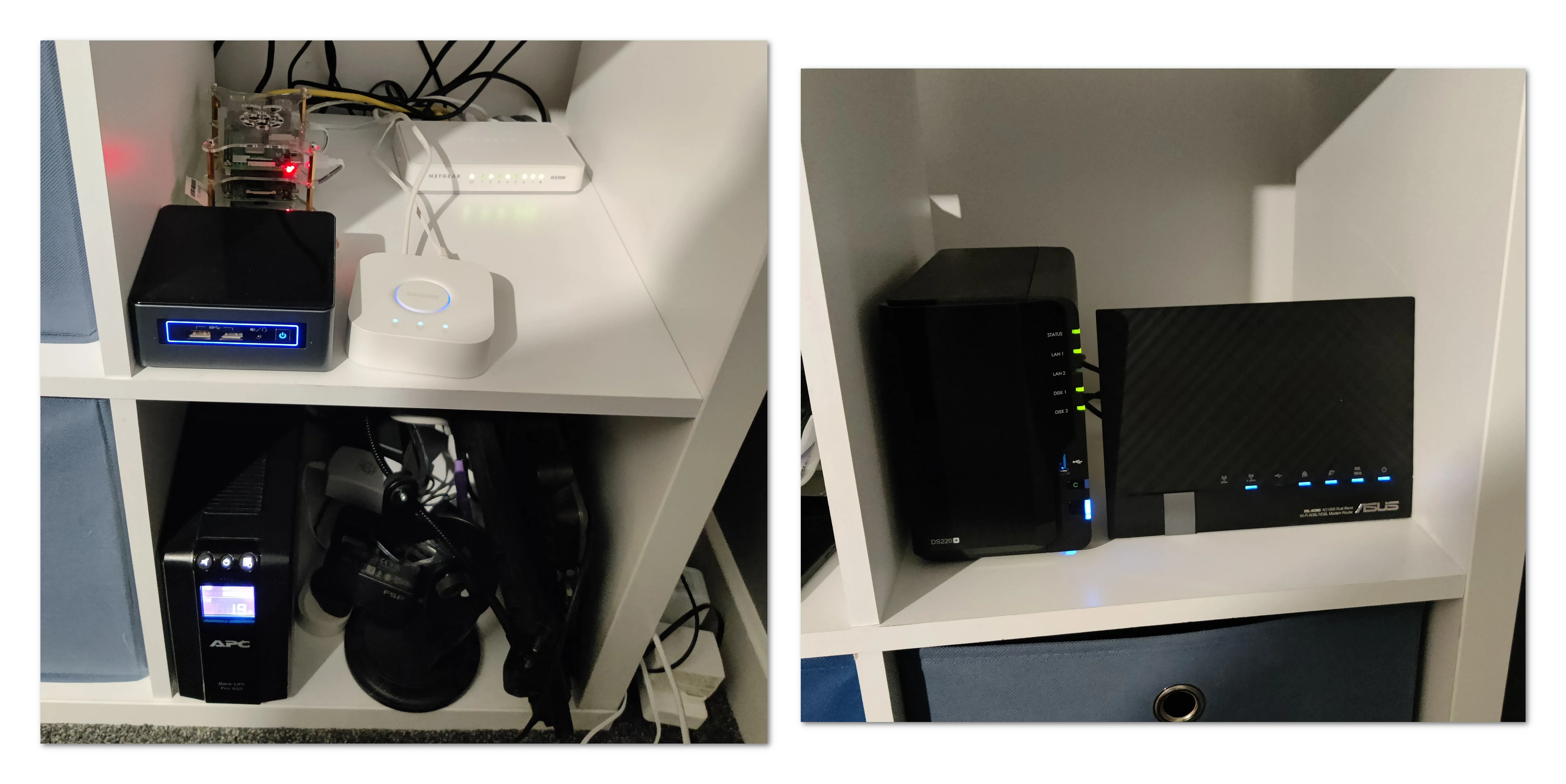My 2023 HomeLab Setup
Thought I’d document my current homelab setup. I’m not one to go full-out with a server rack, my setup is contained within a couple of shelves within some storage cubes:

Within this I have:
- ASUS DSL-AC56U router
- Basic but does what I need for Wi-Fi and handling my standard VDSL WAN line.
- Synology DS220+ NAS box
- Recent upgrade from a 215j, bought as refurbished for cheap.
- Houses a couple of various old 2TB desktop drives, RAIDed for a little safety.
- Used for file storage and backup management.
- Netgear 1GbE switch
- Standard issue unmanaged home switch.
- Stack of 2 Raspberry Pies
- A Raspberry Pi 4 running Home Assistant, for local home automation.
- A currently unused Pi 3, useful for testing things on Arm when needed.
- Intel NUC
- 4 core Intel J3455 @ 1.50GHz, 8GB RAM, 90GB SSD.
- Runs Proxmox for LXC/Docker/VM self-hosted services and test environments.
- Phillips Hue Hub
- Used as a bridge for all Zigbee IoT devices within the home.
- APC Pro 550VA UPS
- To keep network devices online and allow safe NAS power-down on power failure.
- Replaced battery this year after only lasting 2 minutes during a recent power-cut.
The thing I like most about my setup is that it’s low-noise and power efficient. There’s no noise unless the NAS disks spin up during use. The whole system idles at around 11W, which goes up to ~50W when the NAS is out of hibernation (Which is its common default state).
I don’t feel like I need to upgrade anything anytime soon. The recent NAS upgrade and UPS battery refresh has updated everything to my current needs. The NUC is getting a bit old now but I don’t find it slow or limiting in my use so I’ll keep it going as the great little workhorse that it is. I am tempted to move Home Assistant into proxmox, just for easier management and to free up another Pi for random uses, but I don’t see any rush to do this.
On the network side of things, I recently changed the home network to be on a /16 subnet to widen the range of IPs available.
I done this so I can use a more sensible scheme for organising devices on the network, and to have a clear boundary between DHCP devices and differnt static use-cases. I now have something like this:
- 192.168.1.x: DHCP normal network devices/use
- 192.168.2.x: Static range for hardware devices
- 192.168.3.x: Static range for self-hosted app containers/VMs
- 192.168.4.x: Static range for test containers/VMs